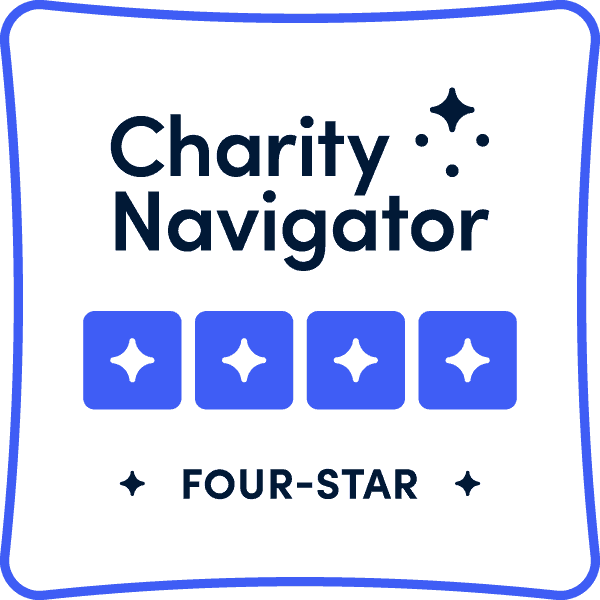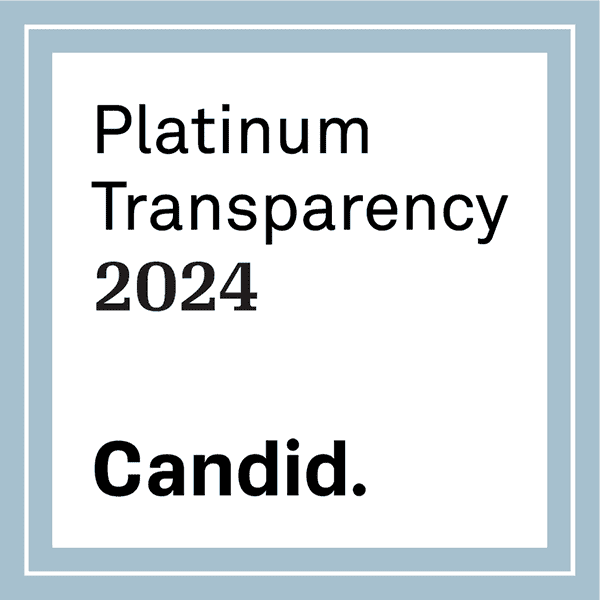Introduction
This guide features excerpts from the paper
PANS/PANDAS and Related Inflammatory Brain Conditions Involving the Basal Ganglia: Overarching Principles of Clinical Management
by Dr. Jennifer Frankovich (Stanford University), Dr. Patrick Whelan (UCLA), Dr. Mark Pasternack (Massachusetts General, Harvard), Dr. Kyle Williams (Massachusetts General, Harvard), Dr. Julia Zhang (Tufts), Dr. Gareth Morgan (University of Leicester), Dr. Chris Pittenger (Yale), Dr. Cynthia Wang (UT-Southwestern), Dr. Melissa Silverman (Stanford), Dr. Gail Bernstein (University of Minnesota), Jackie Horgan (Stanford), Dr. Terence Sanger (USC), Dr. John Gaitanus (Tufts), Dr. Juliette Madan (Dartmouth). Additional contents have been reviewed by members of the Neuroimmune Foundation Scientific and Clinical Advisory Board and Board of Directors.
Patient Questionnaire
The Stanford Immune-Behavioral Health Clinic provided Neuroimmune Foundation with a copy of the extensive patient questionnaire they use at intake as a template for clinicians and researchers in North Carolina wishing to care for patients with PANS and/or research PANS. The questionnaire can be set up in Redcap or a similar platform. Physicians in North Carolina can access a PDF of this questionnaire by logging into their account on the North Carolina Resources page.
For physicians outside of North Carolina requesting a copy, please email info@neuroimmune.org. Thank you.
PANS Symptoms and Diagnosis
PANS stands for Pediatric Acute-onset Neuropsychiatric Syndrome. According to the PANS Research Consortium comprised of physicians and researchers from institutions such as Stanford, Yale, Harvard, Columbia, and National Institute of Mental Health, PANS is a clinical diagnosis requiring OCD (Obsessive-Compulsive Disorder) and/or restrictive food intake as well as two or more of the following symptoms:
- Anxiety
- Emotional Lability
- Depression
- Irritability
- Aggression
- Severely oppositional behaviors
- Behavioral or developmental regression
- Deterioration in school performance, handwriting, or
- math skills
- Sensory abnormalities
- Sleep disturbances
- Enuresis
- Urinary frequency
Identification of the trigger is not required for a diagnosis of PANS. There is no age requirement.
PANS is a diagnosis of exclusion. To exclude other disorders, a comprehensive evaluation including a complete medical and psychiatric history, physical examination, laboratory testing of blood and urine [and possibly, cerebrospinal fluid (CSF)], and selected paraclinical evaluations, such as magnetic resonance imaging, electrocardiogram/echocardiography, electroencephalography, and polysomnography15 (in severe cases and when autoimmune encephalitis is on the differential diagnosis. Diagnostic recommendations include starting with a broad differential and narrow it to PANS only after eliminating all other possibilities such as Sydenham chorea, autoimmune encephalitis, neuropsychiatric lupus, and others.7 (p. 201),15
While the acute onset of PANS is a distinguishing factor, it is still important to consider all the causes of OCD and eating restriction given that many autoimmune/inflammatory diseases are associated with OCD and other psychiatric deteriorations (see section “Differential Diagnosis of Neuropsychiatric Deteriorations” below).
PANDAS Symptoms and Diagnosis
PANDAS is the acronym for Pediatric Autoimmune Neuropsychiatric Disorders Associated with Streptococcal infections. PANDAS is a subset of PANS. Guidelines for diagnosing PANDAS include:
- Presence of OCD and/or tics
- Symptoms begin between age three and puberty
- Acute-onset and episodic (relapsing-remitting) course
- Association with Group A Streptococcal (GAS) infection
- Association with Neurological Abnormalities
The diagnosis of PANDAS does not require comorbid neuropsychiatric symptoms beyond OCD or tics, however, they are often present.
Alternative Diagnoses
Regardless of whether a patient has sudden-onset of symptoms meeting criteria for PANS/PANDAS, it is important to consider other psychiatric disorders and other inflammatory brain condition (post-infectious inflammation or other autoimmune condition (see Differential Diagnosis of Neuropsychiatric Deteriorations hyperlink to scroll to that section). Most inflammatory brain conditions present sub-acutely. Additionally, most inflammatory brain conditions in children do not present with MRI findings (since inflammation and most autoimmune processes are microscopic) or have blood markers so negative findings should be expected. Deep brain processes may not be detected on EEG. For further guidance on inflammatory brain conditions that can cause psychiatric symptoms see:
- Tran, P, Frankovich J, Van Mater H, Dale R, Or-Geva N, McHugh A, Thienemann M. “Pediatric Inflammatory Brain Disease” Complex Disorders in Pediatric Psychiatry. A Clinician’s Guide 1st Edition Editors: David I Driver & Shari Thomas. December 2017.
- Cellucci T, Van Mater H, Graus F, Muscal E, Gallentine W, Klein-Gitelman MS, Benseler SM, Frankovich J, Gorman MP, Van Haren K, Dalmau J, Dale RC. Clinical approach to the diagnosis of autoimmune encephalitis in the pediatric patient. Neurol Neuroimmunol Neuroinflamm. 2020 Jan 17;7(2). pii: e663. doi: 10.1212/NXI.0000000000000663. Print 2020 Mar. PMID:31953309
- Pollak TA, Lennox BR, Müller S, Benros ME, Prüss H, Tebartz van Elst L, Klein H, Steiner J, Frodl T, Bogerts B, Tian L, Groc L, Hasan A, Baune BT, Endres D, Haroon E, Yolken R, Benedetti F, Halaris A, Meyer JH, Stassen H, Leboyer M, Fuchs D, Otto M, Brown DA, Vincent A, Najjar S, Bechter K. Autoimmune psychosis: an international consensus on an approach to the diagnosis and management of psychosis of suspected autoimmune origin. Lancet Psychiatry. 2020 Jan;7(1):93-108. doi: 10.1016/S2215-0366(19)30290-1. Epub 2019 Oct 24. Erratum in: Lancet Psychiatry. 2019 Dec;6(12):e31. PMID: 31669058.
- Mahmud FH, Lteif AN, Renaud DL, Reed AM, Brands CK. Steroid-responsive encephalopathy associated with Hashimoto’s thyroiditis in an adolescent with chronic hallucinations and depression: case report and review. Pediatrics. 2003 Sep;112(3 Pt 1):686-90. doi: 10.1542/peds.112.3.686. PMID: 12949305.
Supporting Evidence
Please check the list below to find supporting evidence that your patient has PANS/PANDAS or other related inflammatory basal ganglia disorder
History suggesting propensity to autoimmunity/inflammatory disease (examples):
- Patient currently has the diagnosis/or has a history of the diagnosis of arthritis, psoriasis, enthesitis, thyroiditis, celiac disease, type 1 diabetes, Bechet’s, inflammatory bowel disease or other autoimmune/inflammatory condition. Enthesitis, arthritis or spondylitis most commonly presents with Achilles tendonitis, plantar fasciitis, first MTP pain/tenderness or inflammatory back pain (pain/stiffness worse in morning or with prolonged stationary positions and better with NSAIDs or exercise often starting in adolescence or early adulthood).
- First-degree family member with an autoimmune/inflammatory condition including: arthritis, enthesitis, thyroiditis, celiac disease, type 1 diabetes, inflammatory bowel disease or other autoimmune/inflammatory condition.
- Patient or first-degree family member diagnosed immunodeficiency and/or has difficulty clearing bacterial infections (recurrent sinusitis or otitis media not related to allergies or anatomic problems, hospitalization due to bacterial infection, needing an unusually prolonged course of antibiotics to clear an infection). These patients or first degree family members would typically have hypogammaglobulinemia, poor response to vaccines and/or B cell development issues (low plasmablasts, class switch, etc.). Immunodeficiency linked to infection clearance issues and autoimmunity.
Laboratory findings of immune dysfunction/inflammation (examples):
- Monocytosis (based on pediatric reference ranges) as this reflects an active infection or inflammatory process.
- Elevated immune complexes (elevated C1Q binding or Raji cell assay) which may reflect an autoimmune process or infection.
- High titers of an autoantibody (histone antibody, thyroid antibodies, ANA, GAD antibody) at least twice separated by 3 months.
- Iron deficiency +/- anemia in the absence of other risk factors for iron deficiency and iron deficiency anemia
- Elevated vasculitis blood marker (D Dimer or vWFag) at least twice separated by 3 months.
- Low complement (low C4 +/- low C3)- typically complements lower in flare and higher in remission.
- Proteinuria or hematuria reflecting a low grade post-infectious nephritis, not explained by a genetic/familial cause.
- Cytopenia (leukopenia or thrombocytopenia).
Physical exam evidence of infection or post-infectious inflammation or chronic inflammation +/- vascular inflammation (examples):
- Infection/post-infection inflammation/or other active sign of inflammation (pharyngitis, tonsillitis, adenoiditis, sinusitis, otitis media, uveitis, retinal vasculitis, perianal redness, palatal petechiae) in new-onset case or new-onset flare.
- Small vessel vasculitis signs (prominent onychodermal band, periungual redness, splinter hemorrhages, livedo reticularis) in patients with chronic symptoms or flare on chronic symptoms.
- Arthritis or enthesitis (on physical exam) and symptoms of inflammatory back or joint pain (however, be aware that psychiatric symptoms may be so severe that they overshadow subtle joint symptoms).
- Pain and stiffness which is worse in the morning or with stationary positions.
- Pain and stiffness which improves with exercise and/or NSAIDS.
- Tenderness at joint margins and/or at entheseal points (where tendons and ligaments insert onto bone) in the absence of myofascial tender points which would be consistent with a pain amplification syndrome.
- MRI or ultrasound showing thickening or enhancement of joint capsule or synovium and/or joint effusions.
Signs suggesting basal ganglia involvement (examples):
- Neuro exam finding indicating basal ganglia dysfunction: overflow dystonia, truncal weakness and difficulty holding arms up or overhead, piano playing finger movements when arms/fingers outstretched, positive glabellar sign, darting tongue or tongue fasciculations (Wormian tongue movements), weak grip and/or milkmaid sign, hung-up reflexes, arm or leg movements during standing or sitting Romberg.
- Eye movements/vision abnormalities consistent with a basal ganglia disorder.
- MRI (obtained within a few days of shows basal ganglia enhancement.
Neuropsychiatric symptoms (relating to the basal ganglia functions) which span multiple domains and started simultaneously ((sudden behavior and/or mood change, new and sudden learning difficulties (loss of math and reading skills) not relating to behavior and mood, movements during REM sleep16–18, dysautonomia, new urinary frequency/incontinence, new movement abnormality pertaining to basal ganglia dysfunction (handwriting change, tics, etc.), and/or sensory amplification which can be elicited on exam.
Differential Diagnosis of Neuropsychiatric Deteriorations
Primary inflammatory brain disorders
- Autoimmune encephalitis (Hashimoto’s, anti-NMDA receptor, GAD associated, etc.)
- Demyelinating diseases: Acute disseminated encephalomyelitis (ADEM), Multiple sclerosis, neuromyelitis optica
- Central nervous system vasculitis
- Post-infectious neuroinflammatory conditions +/- evidence of systemic inflammation (small vessel vasculitis, arthritis, etc.).
- Post-COVID neuroinflammatory disease
- PANS/PANDAS
- Encephalitis lethargica
- Sydenham chorea
Neoplastic disease affecting the brain
- Paraneoplastic autoimmune encephalitis
- Primary CNS tumors (glioma, astrocytoma, germ cell tumors, etc.)
- Lymphoma or leukemia involving the brain
- Metastatic disease (neuroblastoma, etc.)
- Langerhans’ Cell Histiocytosis Disease
Systemic autoimmune /inflammatory condition with secondary psychiatric symptoms
- Neuropsychiatric Lupus
- Sjogren’s
- Behcet’s
- Systemic Vasculitis
- Antiphospholipid antibody syndrome
- Celiac disease
- Sarcoidosis
- Autoinflammatory diseases (interferonopathies, hemophagocytic lymphohistiocytosis, FIRES, etc.)
- Acute necrotizing encephalopathies
- Medication induced inflammatory condition (minocycline and other medication hypersensitivity reactions
Nutritional
- Vitamin B12 deficiency
Primary infections of the brain or infectious triggers
- Parasites (I.e., malaria, etc.)
- Bacteria (Borrelia burgdorferi, Mycoplasma pneumonia, Mycobacterium tuberculosis, Treponema pallidum, Listeria monocytogenes).
- Viruses (adenovirus, enterovirus, Epstein-Barr virus, HSV, HIV, influenza, JC virus, measles, rabies, varicella zoster, West Nile virus, coronaviruses)
Systemic or localized (but not CNS) infections on the background of a child with atypical neurodevelopmental condition (ADHD, anxiety, autism, developmental delay, etc.)
- ENT infection (tonsillitis, adenoiditis, otitis media, mastoiditis, abscess, etc.)
- Other bacterial infections (perianal strep)
- Severe viral infections (flu, COVID19, adenovirus, etc.)
Metabolic
- Genetic/inherited: leukodystrophies, mitochondrial diseases, mucopolysaccharidoses, organic acidurias, Wilson’s disease
- Hepatic encephalopathy
- Toxic ingestions or infections with underlying metabolic disorder
Seizure disorders
- Primary seizure disorders (idiopathic, genetic, or autoimmune)
- ESES (seizures at night)
- Underlying primary seizure disorder in the setting of new infection or inflammatory disorder.
- Acute encephalopathy with seizures and diffusion restriction (AESD)
Toxic ingestion/exposure
(+/– underlying psychiatric/atypical neurodevelopment conditions)
- Recreational drug use (alcohol, marijuana, synthetic cannabinoids, cocaine, opioids, methamphetamines)
- Toxic ingestions (ethylene glycol, methanol, inhalants)
- Toxic exposures (insecticide)
- Medications (metronidazole, cyclosporin, etc.)
- Chemotherapy
Primary psychiatric disorders – new onset or established
(+/– infection, +/– systemic inflammatory disease, +/– autoimmune encephalitis, +/– social stressor)
- Autism
- Obsessive compulsive disorder
- Anorexia nervosa
- Avoidant/restrictive food intake disorder (ARFID)
- Tourette syndrome
- Transient tic disorder
- Bipolar disorder
- Schizophrenia or other psychotic disorder
- Conversion disorder
- Psychogenic seizures
Other
- Trauma (+/- underlying neurodevelopmental challenge, etc.)
31 Item PANS Symptom Inventory and Ratings
Developed by Gail Bernstein, MD and Tanya Murphy, MD
| Symptom | 0-None | 1-Mild | 2-Moderate | 3-Severe | 4-Extreme |
|---|---|---|---|---|---|
| Obsessions | |||||
| Compulsions | |||||
| Hoarding | |||||
| Food Refusal/avoidance | |||||
| Urge to overeat; thinking about eating all the time | |||||
| Fluid refusal/avoidance | |||||
| Separation anxiety | |||||
| Other anxiety/fears/phobias/panic attacks | |||||
| Mood swings/moodiness | |||||
| Emotional lability (inappropriate crying/laughing spells) | |||||
| Suicidal ideation/behavior | |||||
| Depression/sadness | |||||
| Irritability | |||||
| Aggressive behaviors, violence, and/or rage | |||||
| Oppositional behaviors | |||||
| Hyperactivity or impulsivity | |||||
| Trouble paying attention | |||||
| Baby talk | |||||
| Other behavioral/developmental regression (e.g., poor self-care, immature judgement for age) | |||||
| Worsening of school performance | |||||
| Worsening of handwriting/copying/art | |||||
| Cognitive symptoms (difficulty thinking, foggy brain, memory problems) | |||||
| Pain (headaches, abdominal pain, body pain) | |||||
| Sleep disturbance | |||||
| Daytime wetting or bedwetting (enuresis) | |||||
| Urinary frequency (uses restroom frequently) | |||||
| Bothered by sounds, smells, textures, or lights (sensory amplification) | |||||
| Hallucinations | |||||
| Delusions or paranoid thoughts | |||||
| Tics (moments) | |||||
| Tics (sounds) |
PANS/PANDAS Treatment
In 2017, treatment guidelines for PANS and PANDAS were published in a special issue of the Journal of Child and Adolescent Psychopharmacology (JCAP, 2017). We strongly urge you to review these guidelines as they provide detailed treatment guidelines that are far more robust than can be easily covered here. Authors of the guidelines include physicians and researchers including Stanford, Yale, Harvard, Columbia, and National Institute of Mental Health and others. They categorized treatments based upon severity.
Treatment for mild to moderate PANS/PANDAS can include:
- Addressing infections
- Corticosteroids
- Anti-Inflammatories
- Therapy
- SSRIs (please see JCAP for dosing as dose is typically low and and then escalated as tolerated)
Treatment for moderate to severe PANS/PANDAS can include:
- Addressing infections
- Corticosteroids
- Anti-Inflammatories
- Therapy
- SSRIs (please see JCAP for dosing as dose is typically low and and then escalated as tolerated)
- IVIG
- Plasmapheresis
Treatment for severe to extreme PANS/PANDAS can include:
- Long, tapered corticosteroid courses or repeated high dose IV corticosteroids
- IVIG
- Plasmapheresis
- Rituximab
- Addressing infections and the above
- DMARDs
PANS Sub-Groups and Corresponding Treatment Considerations
| Sub-Group | Treatment Considerations |
|---|---|
| Relapsing-remitting with full resolution | Patients in this category typically have less severe episodes, less frequent episodes, and return to a good baseline between episodes. These patients typically do not progress to a chronic-static course. Most of the episodes/flares last weeks to a few months thus psychotropics and aggressive immunomodulation are not warranted. These patients should be managed with CBT with considerations of NSAIDS or brief (5 day) corticosteroid bursts (akin to the treatment of asthma exacerbations) to treat the flares. However, it is not known if the benefits of NSAIDS and corticosteroids outweigh the risks. As described above, addressing trauma and underlying infections is essential. Steroids may prolong elimination of triggering infections. |
| Patients with Primary Chronic Symptoms | The vast majority of cases of PANS are relapsing-remitting with initial episodes lasting 4 weeks-4 months. For patients with a high burden of symptoms (with no or little signs of an improving trajectory) by 6 months likely have one of the following situations: ongoing infection or autoimmune/inflammatory condition (arthritis or other autoimmune condition) or an underlying neurogenetic/neuroimmunogenetic condition, or a combination of these factors. Primary chronic cases are rare but may represent a good portion of families who participate in blogs or frequent clinics and ERs due to the high level of burden and tremendous mental anguish suffered by these patients and families. These cases benefit from a multidisciplinary team approach for a thorough and coordinated evaluation and treatment planning. Essential subspecialists include: psychiatrist with expertise in OCD and other behavior disorders, behavioral therapist, social work support, neurodevelopmental specialist. Subspecialists to consult include: infectious disease expert, rheumatologist, immunologist, geneticist with expertise in neurogenetics/neuroimmunogenetics. |
| Relapsing-remitting worsening baseline +/- eventual progression to secondary chronic. | A subgroup of patients with PANS have a relapsing-remitting course but do not return to baseline between episodes. These patients tend to have more severe flares and take longer to recover from each flare. They may also suffer from more frequent flares and stacked-flares. Evaluation for underlying immunodeficiency and autoimmune/rheumatological conditions may need to be explored and consultation with psychiatrists which can help stabilize the brain so the child will be more robust (and not deteriorate) with the usual barrage of childhood infections. As with primary chronic PANS, these patients benefit from having a multidisciplinary approach including clinicians with expertise in neurodevelopmental disorders and neuroimmunogenetics. |
| Patients with frequent relapses and frequent infections | Patients with underlying immunodeficiencies (which composes a small subset of patients with PANS) may have a harder time clearing infections and thus may have more PANS episodes than immunocompetent patients with PANS50,51. Addressing the underlying immunodeficiency may help minimize the frequency and severity of relapses. |
| Patients with frequent relapses with signs/symptoms of autoimmunity and/or arthritis | Since immunodeficiency causes “frustrated inflammation” (i.e., difficulty clearing infections thus overactivation of inflammation pathways) and predisposes to the development of autoimmunity and other inflammatory diseases, patients with immunodeficiency and frequent infections and/or PANS relapses should be evaluated for secondary autoimmune conditions. |









